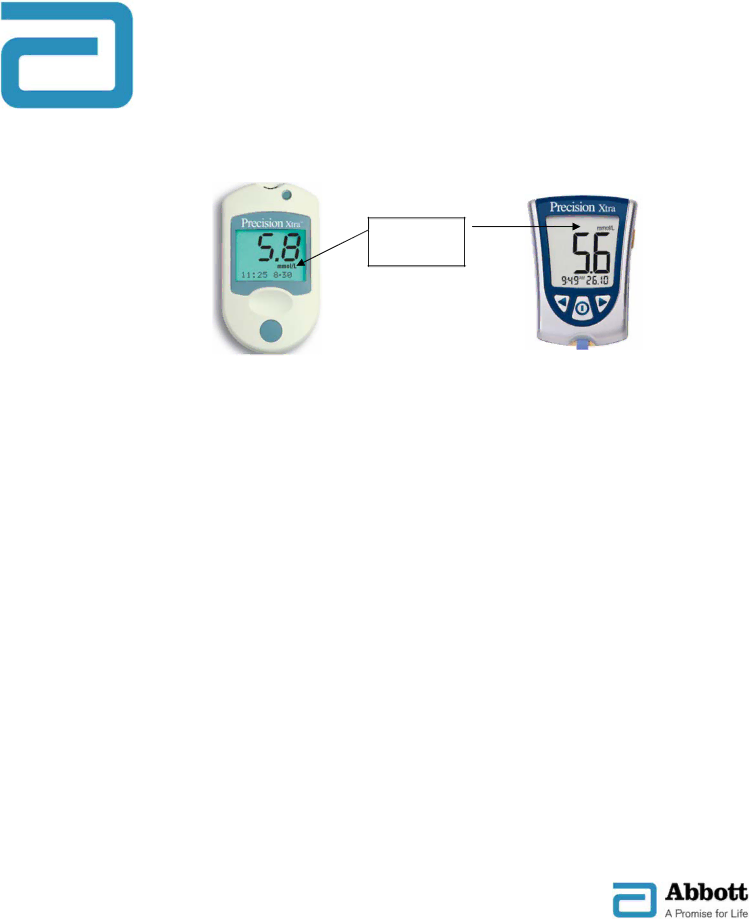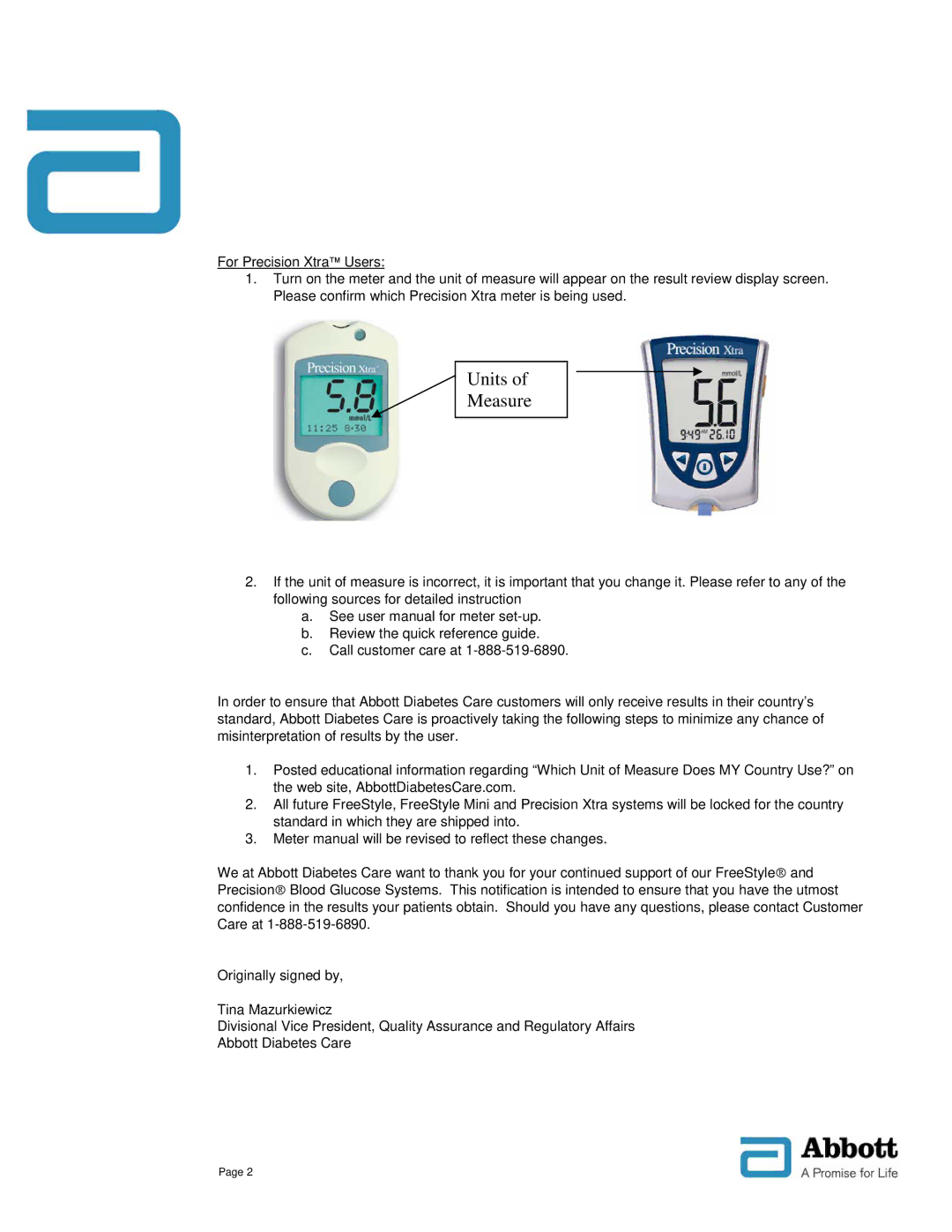7115 specifications
Abbott Diabetes Care has long been a pioneer in the field of diabetes management, and the introduction of the Abbott Diabetes Care 7115 device marks a significant advancement in glucose monitoring technology. The 7115 is designed to empower patients with Diabetes to take control of their condition through easy-to-use interfaces and state-of-the-art features.One of the primary characteristics of the Abbott Diabetes Care 7115 is its advanced continuous glucose monitoring (CGM) system. This system allows users to track their glucose levels in real-time without the need for fingerstick testing. The device features a slim, discreet sensor that can be worn seamlessly throughout daily activities, making it less intrusive than traditional monitoring methods. With an impressive sensor lifespan, users can enjoy prolonged periods of glucose tracking with minimal disruption.
The 7115 also comes equipped with an intuitive mobile app that integrates with the CGM system. This app provides users with trend analysis as well as insights into their glucose patterns. Through advanced algorithms, the app can predict potential highs and lows in glucose levels, allowing users to take proactive measures. It also offers customizable alerts, empowering users to react in real-time to changes in their glucose levels.
For enhanced connectivity, the Abbott Diabetes Care 7115 is compatible with various smart devices, facilitating seamless data sharing with healthcare providers and caregivers. This feature not only enhances patient engagement but also fosters collaborative care by allowing medical professionals to monitor their patients' data remotely. This aspect is particularly valuable for individuals managing diabetes as part of a comprehensive healthcare strategy.
Another key feature of the 7115 is its emphasis on user-friendly design. The device is lightweight and ergonomically designed for comfort, allowing users to wear it for extended periods without discomfort. Additionally, the screen interface is bright and easy to navigate, ensuring that users can access crucial information quickly.
In summary, the Abbott Diabetes Care 7115 represents a significant leap forward in diabetes management technology. With its continuous glucose monitoring capabilities, integrated smartphone app, actionable insights, and user-friendly design, the 7115 empowers individuals with diabetes to manage their health more effectively. This innovation not only improves daily diabetes management but also supports better long-term health outcomes.

